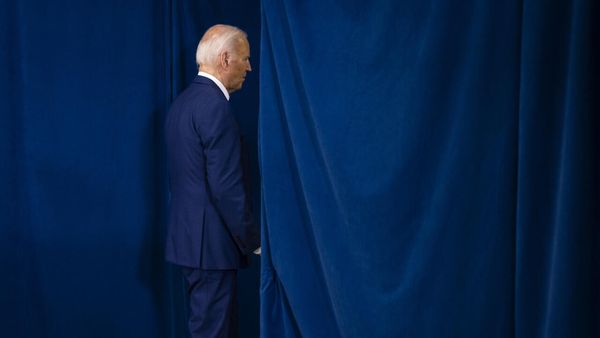
Geography is the foundation of Australia’s international strategy, and the nature of the nation — history and culture — sets the way we think about foreign policy. Geography is hardware, culture is software.
As the only nation with its own continent, geography gives Australia great gifts and many choices. A logical response to that continental gift would be to declare neutrality, turn away from the world’s troubles and enjoy the isolation of our oceans. Yet the isolationist instinct has never taken hold of our society and politics.
In the “I” and “P” columns of Australia’s intellectual property battles, the international easily beats the isolationist — interests, influence and income drive the practical regions of realpolitik and economics, while on the values side sit identity, ideas and individual choices. The property perennials are the way power and pragmatism pal up to push and pull at principle.
Australia’s willingness to march off to foreign wars is one proof of international involvement. Another is the shift from a mainly whites-only monoculture to a great multicultural society. Here is a national software that engages with the world.
The roles of cultural software and geographic hardware are the focus of two new books. Culture is central to Michael O’Keefe’s Australian Foreign Policy: Relationships, Issues, and Strategic Culture. Geography is the lens for Rebecca Strating and Joanne Wallis’s Girt By Sea: Reimagining Australia’s Security.
O’Keefe writes that the “art of the possible” in Australian foreign policy is usually described as the interplay between the naked self-interest of realism and the values of liberal internationalism. Between those two poles, though, he sees another driving force — Australia’s distinctive strategic culture set by history: “The abiding belief from the first settlement that Australia is a geographically large island with a small, largely Western population, perched on the boundary of a potentially threatening region.”
The four “core beliefs” that characterise Australian strategic culture, O’Keefe writes, are:
• Geographic isolation from Anglo-American culture and alienation from Asia.
• Exaggerated threat perceptions sourced from Anglo-American culture and centred on Asia.
• A sense of indefensibility arising from geography and demography.
• A fear of abandonment by Anglo-American allies in the face of indefensibility from a threatening region.
Strating and Wallis offer four “key dynamics” in “thinking about foreign and security policy”:
• Australia believes that it needs security guarantors but is separated by the “tyranny of distance” from those it sees as “a patron”.
• Australia fears being “abandoned” by the great and powerful friends it has chosen as security guarantors.
• Australia is uncertain about whether it should seek security from its region or within its region – depending on the potential adversaries it is anxious about at the time.
• Australia values an international order that is based on rules, preferably rules that purport to be liberal.
The similarities in these “core” and “key” lists mean the critiques of the two books often chime. As O’Keefe describes the “securitisation of foreign policy” so Strating and Wallis point to “Australia’s underlying assumption that the military should play the leading role in national security.”
O’Keefe says the relationship with the United States is “pivotal” in understanding Australia’s foreign policy culture. Australia’s threat perceptions provide “an enduring rationale for keeping the alliance strong,” he writes, and “a potent mix of history, ideology and myth-making” ensure that that alliance has been “reinvented through each generation and strategic challenge since the second world war.”
For Strating and Wallis, “Australia can’t defend itself without relying on continued US support” because most of our defence procurements are either US-built or compatible with US systems. The agreement for the AUKUS submarines is a nuclear-powered heightening of the existing defence-equipment reality. They offer no judgement “about whether the US alliance is a good or bad habit” while noting it would be “an expensive habit to break.” The trouble with this “highly consequential habit,” they suggest, is that habits can stop us thinking about what we are doing, or asking questions, or seeing other possible actions.
“The US provides the antidote for the deep-seated insecurity” Australia feels about Asia, says O’Keefe. “With the rise of China and perceived decline of the US, realists might suggest downgrading the alliance, but Canberra has taken the opposite tack, and this highlights the centrality of strategic cultural values to Australia’s foreign policy DNA.”
Australia has long been cast as a “liminal state,” Strating and Wallis write, located in Asia but culturally bound to a distant Anglosphere: “Fear of an Asian invasion is an established trope in Australian culture, literature and politics, shaping its foreign, defence and immigration policies.”
While elements of the two books often rhyme, they tell their stories in different ways as they explore the roles of culture and geography,
Strating and Wallis began their book journey in 2020 when they were among a group of academics and analysts invited to Australia’s defence department for a day-long discussion of Australia’s strategic options. One of the speakers was asked who represented Australia’s “ideal strategic personality.” His answer was “Crocodile Dundee — confident with a big knife.”
For the authors, this was an unflattering and uncomfortable idea of how Australia should view, interpret and behave in the world, “exemplified by a boorish hard drinker who solves problems with a knife.” Before the next session, “some of the women participants decided to propose an alternative strategic personality: the Ngaragu woman, champion tennis player and National Indigenous Tennis Ambassador Ashleigh Barty.”
In a later op-ed, Strating and Wallis argued that instead of macho overconfidence, Australia’s strategic personality would benefit from Barty’s humility, teamwork and versatility. In the book sprung from that seed, they use a national anthem line to describe the many options available to a continent “girt by sea.” The first of their seven chapters is a meditation on the traditional limits of Australia’s strategic understanding, while each of the following chapters is about one of the seas that matter to Australia: the “North Seas” (the Torres Strait, Timor, Arafura and Coral Seas); the Western Pacific; the South China Sea; the South Pacific; the Indian Ocean; and the Southern Ocean.
The seas that are Australia’s “immediate geographic area,” they write, need far closer attention, driven by deeper understanding and broader policy settings. The “North Seas” discussion, for example, urges Australia to reset its “strategic imagination and habits of engagement” with Indonesia, Timor-Leste and Papua New Guinea, ranging from illegal fishing surveillance to the catastrophic effects of climate change. Such a reimagining finds many roles for the traditional relationships of Aboriginals and Torres Strait Islanders in the Northern Seas and South Pacific.
Strating and Wallis skewer the Indo-Pacific vision that has dominated Australian foreign and defence policy for the past decade. That broad sweep is too vast for a middle power such as Australia to do useful security duty, they argue, yet Canberra has “led the global adoption of the ‘Indo-Pacific’ label to describe its region of strategic interest.”
The Indo-Pacific highlights the maritime domain as the frontline of emerging challenges to Australia’s national interests, Strating and Wallis write, before putting the concept to the sword:
However, the Indo-Pacific lacks a logic as a “region”: there is no unifying geographic, cultural, historical or political rationale behind it. It is the strategic equivalent of a Rorschach test: for some, it reflects the interconnectedness of the trading routes; for others, it’s merely a political construct designed to support the containment of China. It’s also a problematic term because Australia’s security interests are not uniform across the Indo-Pacific. The maritime threats to Australia are too complex and interdependent to be negotiated by a “one-size-fits-all” strategic system. Australia has very different interests, histories and policy approaches across its key maritime domains.
The maritime emphasis of Girt By Sea sails a similar course to one of Australia’s great strategic thinkers, Paul Dibb. Before entering the world of intelligence and defence, Dibb was a geographer, and maps are central to his discussion of strategy. Like Dibb, Strating and Wallis think geography defines the problem and offers many of the answers. They note how Dibb’s 1986 Review of Australia’s Defence Capabilities and the 1987 defence white paper “shifted Australia’s focus from forward defence to defence self-reliance and the defence of Australia. The Dibb review made it clear that Australia’s maritime environment was a central element of national security, as the air-sea gap to Australia’s north ‘would present a formidable obstacle to any aggressor.’”
Dibb’s name became a swear-word for one of Australia’s defence tribes, the army, because his analysis meant the navy and air force should get a bigger share of cash and attention. In the same way, Girt By Sea is a salty description of Australia’s security needs that will entrance admirals but enrage generals.
Strating and Wallis argue that Canberra is no longer “seablind.” AUKUS and the Albanese government’s 2023 strategic review “suggest that Australia is seeking to both deter and prepare for conflicts in maritime, air and littoral domains, reflecting its strategic geography and that of the broader Indo-Pacific. The Defence Strategic Review also de-emphasises the land forces so integral to operations in Afghanistan and Iraq, suggesting that Australia can no longer afford — if it ever could — to become bogged down in faraway wars.”
Michael O’Keefe crams several books into 400 pages — a thematic discussion of Australia’s strategic culture, a history of that culture using key bilateral relationships, and a textbook. In textbook mode, he offers twenty sets of figures and tables (China trade and investment; Japan and Australia by numbers; trade and aid with Indonesia), twenty-six boxes (White Australia; the Domino theory; the Regional Assistance Mission to Solomon Islands) and seventeen case studies (China’s claims in the South China Sea; Nauru and Australia’s “Pacific Solution”; Australia’s “see-sawing foreign policy on asylum”).
On bilateral relationships, O’Keefe devotes two chapters each to the United States (alliance and alignment); China (trading partner, potential threat and strategic competitor); Japan (shifting from bitter enemy to “quasi alliance”); and Indonesia (“proximity and the unrealisable potential of dissimilar neighbours”).
The bilateral approach has plenty of history in the way Australia thinks about the world. The four countries O’Keefe deals with are the same ones the Howard government identified in its 1997 foreign policy white paper as “the countries which most substantially engage Australia’s interests.”
After two chapters on the South Pacific and challenges to Australia’s “hegemonic” credentials in the islands, O’Keefe’s concluding chapters cover the politicisation of Australian development aid as a foreign policy tool; the realist approach to climate change by the world’s largest exporter of coal and natural gas; and asylum seeker policy on the boundary between foreign policy and domestic politics.
O’Keefe judges that inertia and the mantra of “national interest” mean little changes in the way Australia does foreign policy. Rather than celebrating the benefits of geography, the sense of isolation continues to drive alliances, alignments and defence spending:
Threat perceptions that are often exaggerated by fears of abandonment and indefensibility are part of Australia’s foreign policy DNA. The latest in a long line of threats is China and Canberra’s positioning in advance of a looming conflict is driving much of Australian foreign policy, especially in the South Pacific. Conflict is by no means inevitable, and will likely be driven more by Beijing and Washington than Canberra, but the pattern of aligning with the “great and powerful friend” to counter threats to the “rules-based order” is clear.
While both books are thematic works, their chapters have strong narrative bones. This footnote and index tragic was impressed: in Strating and Wallis they run to more than fifty pages, while O’Keefe reaches ninety. Built on wide reading and deep thinking, these books are fine examples of the art of paperback publishing.
O’Keefe’s work has the weaknesses of its strengths. Textbook vies with text as the flow of argument weaves through a crowd of facts. He reaches high, hitting many targets, but it makes for a deliberate read.
With only one target, Strating and Wallis offer the sharper work. Their elegant frame — the six maritime domains central to Australia’s interests — has scope for the many international tides that lap the nation with its own continent.
A fractured international time of superpower competition and regional uncertainty demands responses from writers as much as policy makers. One positive of our troubled era has been the flow of books by Australians.
These two books bump against the ambitious understanding of “region” in Rory Medcalf’s Contest for the Indo-Pacific. In his big history, O’Keefe must navigate the shade cast by Allan Gyngell’s magisterial Fear of Abandonment and wrestle the heft of Allan Behm’s No Enemies No Friends. The reimagining of Australia’s security by Strating and Wallis puts them in the same league as Hugh White’s How to Defend Australia and Sam Roggeveen’s The Echidna Strategy, while they are less sceptical of the US alliance than Clinton Fernandes in Subimperial Power or Emma Shortis in Our Exceptional Friend.
Tough times for Australian foreign policy offer many chances to writers; these latest two works answer the call. •
Girt By Sea: Re-Imagining Australia’s Security
By Rebecca Strating & Joanne Wallis | La Trobe University Press with Black Inc. | 287 pages | $36.99
Australian Foreign Policy: Relationships, Issues, and Strategic Culture
By Michael O’Keefe | Bloomsbury | 399 pages | $58.49
The post How Australia does security and foreign policy appeared first on Inside Story.







